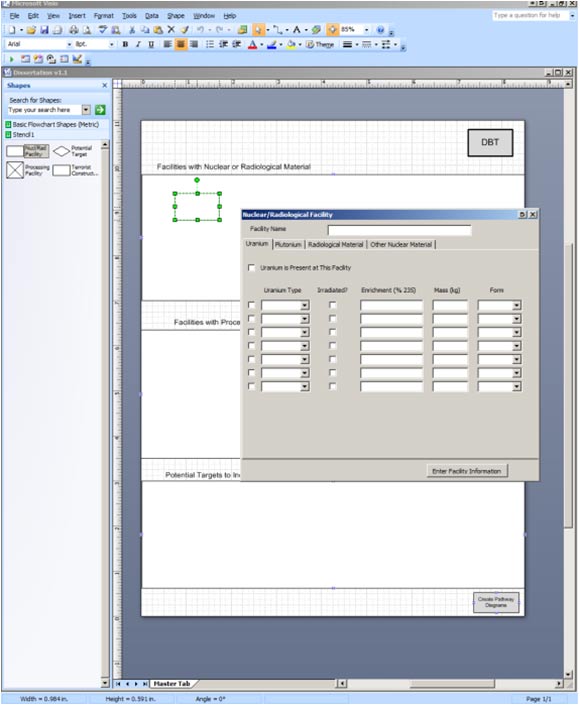Abstract:
The modern nuclear community faces threats that necessitate the development of a new approach to nuclear security and risk management. Existing nuclear safeguards and security measures must be re-evaluated by each State to ensure that they are sufficiently resistant to all of the various threats that face them. The risks in any state will depend on the adversary\’s capabilities as well as the state\’s nuclear infrastructure, nuclear activities, etc. It is therefore insufficient to know how each individual facility may be improved. In order to manage the limited resources most states have they must know how improvements and changes at individual facilities or sites change the overall risk and vulnerabilities to their state as a whole.
The focus of this research will be on steps that can be taken by the nuclear community that have an impact on the overall state vulnerability. These include improving physical protection, decreasing material attractiveness, improving nuclear safeguards, etc. Through pathway analysis we are developing a methodology that will encompass all of these inputs over a state\’s entire nuclear infrastructure and determine how vulnerable that state is as well as where resources can most effectively be applied to have maximum impact on reducing the overall vulnerability of that state.
We will develop a methodology as well as a computational tool to compute the risk to the state as a whole due to terrorist threats of:
-
Sabotage
-
Theft of SNM leading to the production of an IND
-
Theft of rad material leading to the production of an RDD
-
Theft of a nuclear weapon
This will allow the state to quantify the risk they are currently facing and determine how changes at individual facilities change the overall risk to the state.
Creating the capability to perform a system wide risk assessment is important not only to determine a state\’s performance but also serves as a concrete justification to determine where resources should be spent. A state may only have the resources to either upgrade the physical protection measures (buy new equipment, hire more guards, etc) at a spent fuel storage depot or pay to replace the HEU fuel at their research reactor with LEU. Those charged with physical protection at the storage depot will make the best argument they can for allocating those resources to upgrading their site, while the industry or government entity that stands to gain from replacing the fuel will argue as effectively as they can to change the fuel in the research reactor. Neither side is likely to understand much (if anything) about the benefits and drawbacks of the other, making an unbiased decision difficult. In addition, there may be other outside influences. The congressman, senators, etc from the district the storage depot is in are likely to favor bringing more jobs and income into their own districts while another set of officials may stand to gain more from the resources going to the research reactor. None of these considerations have anything to do with spending the resources most effectively. An unbiased methodology that is internationally accepted has the potential to ensure that those resources are sent to the site where they will do the most for minimizing the risk to the state as a whole.

Screenshot of the Nuclear Security and Risk Management Tool
Associated Publications:
- C. Myers, "Quantitative Methodology for Assessing State Level Nuclear Security Measures", Ph.D. Dissertation, Nuclear Engineering, Texas A&M University, College Station, TX (2012).
- C.T. Myers, W.S. Charlton, D.G. Ford, "Risk Analysis and Management of State Nuclear Security Measures", 51st Annual Meeting for the Institute of Nuclear Materials Management, Baltimore, Maryland, July 11-15, 2010.